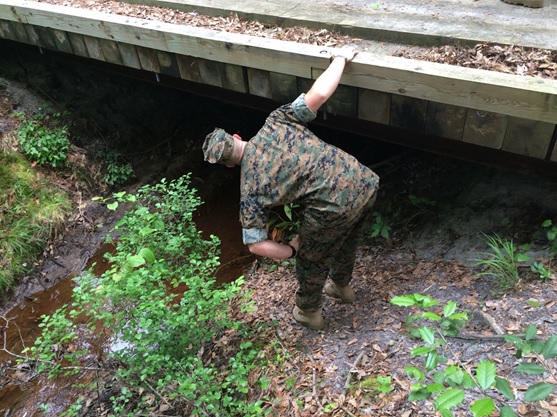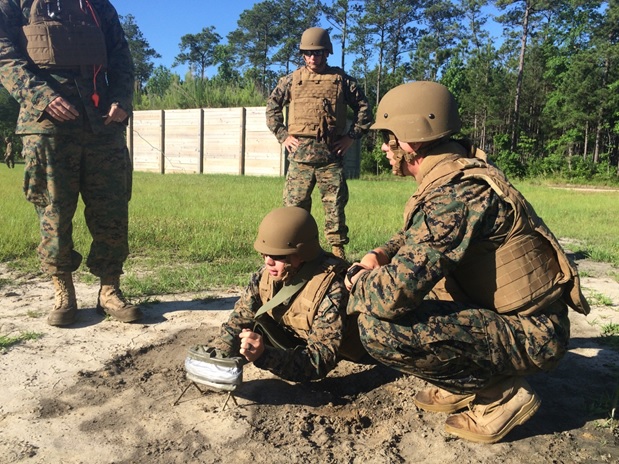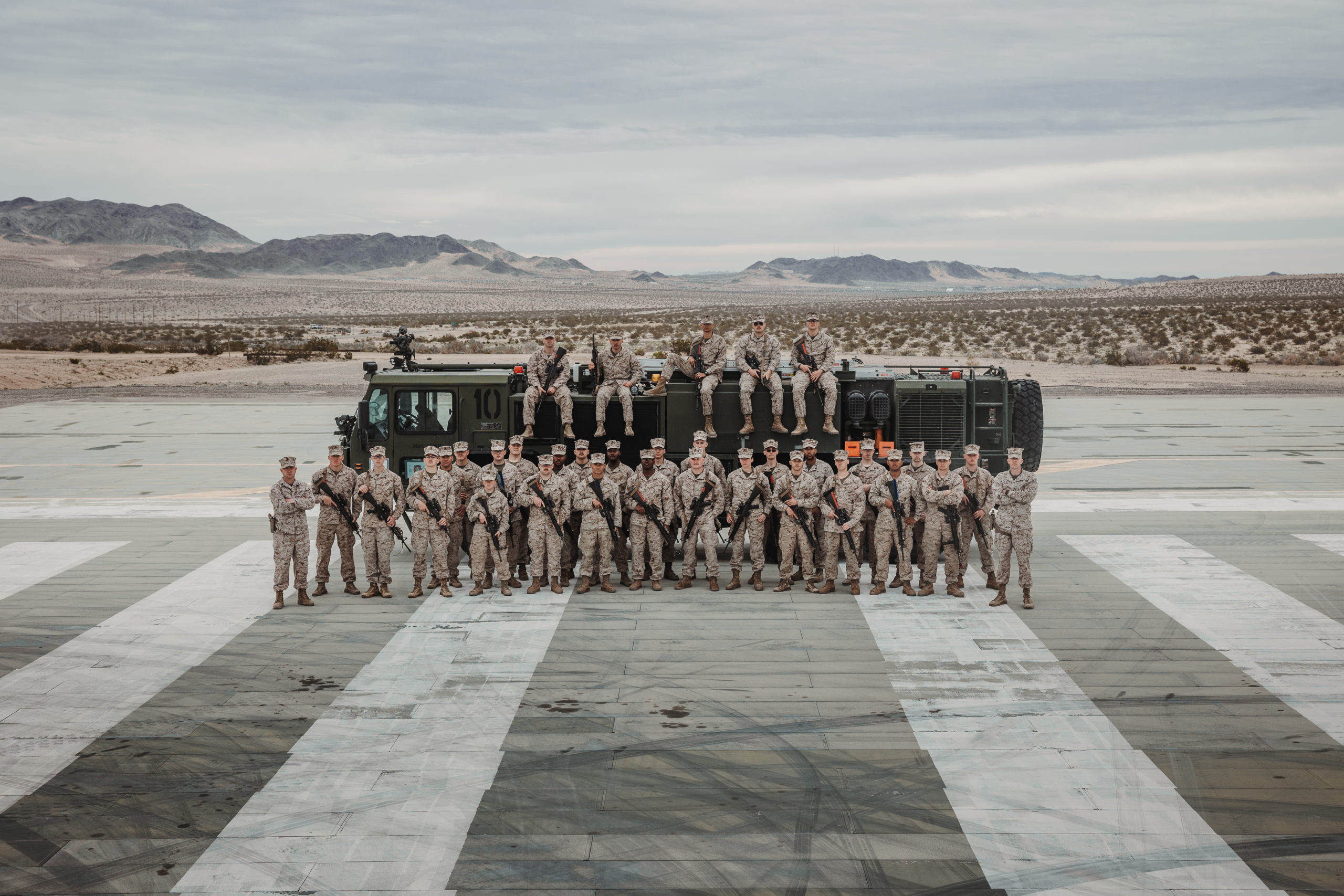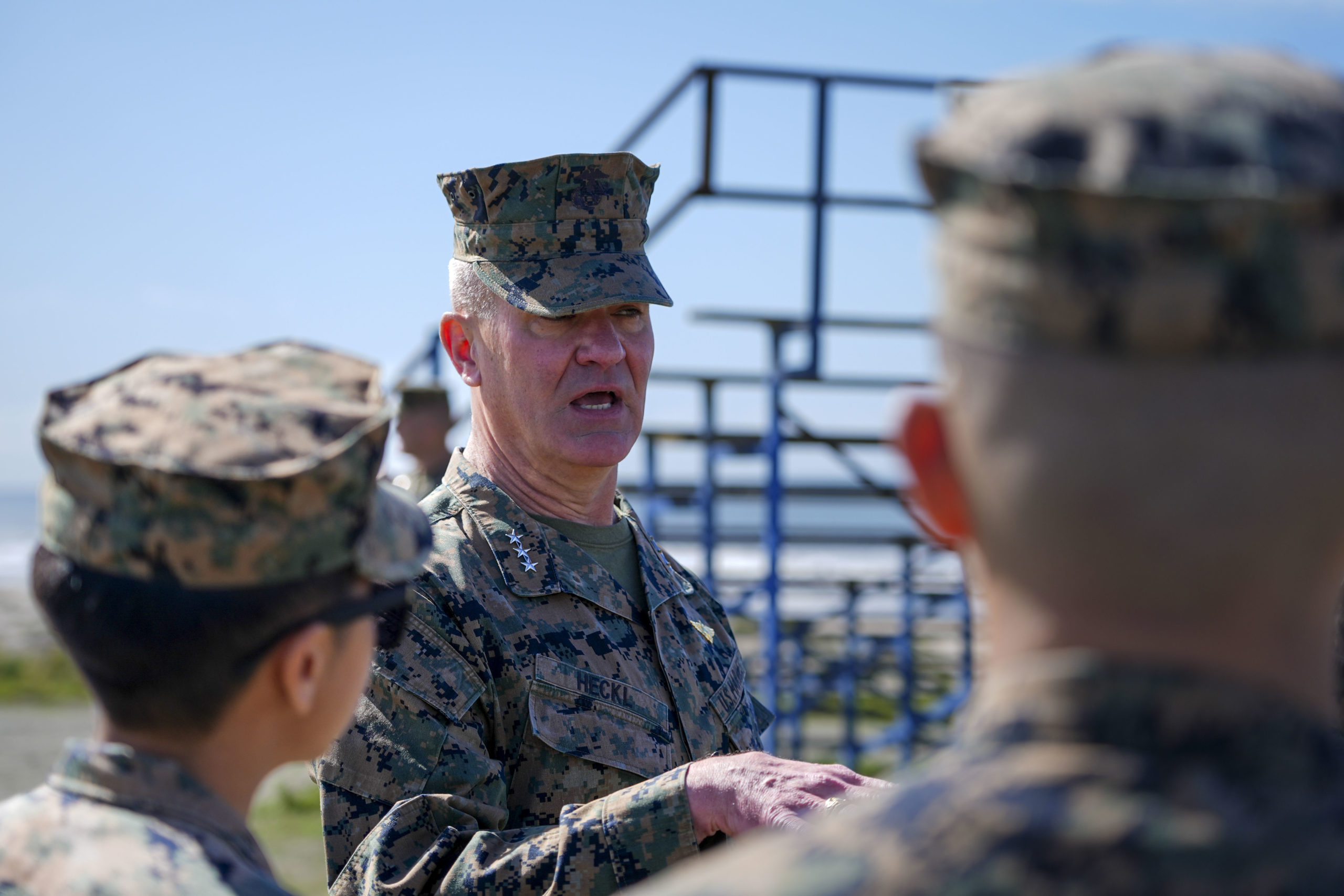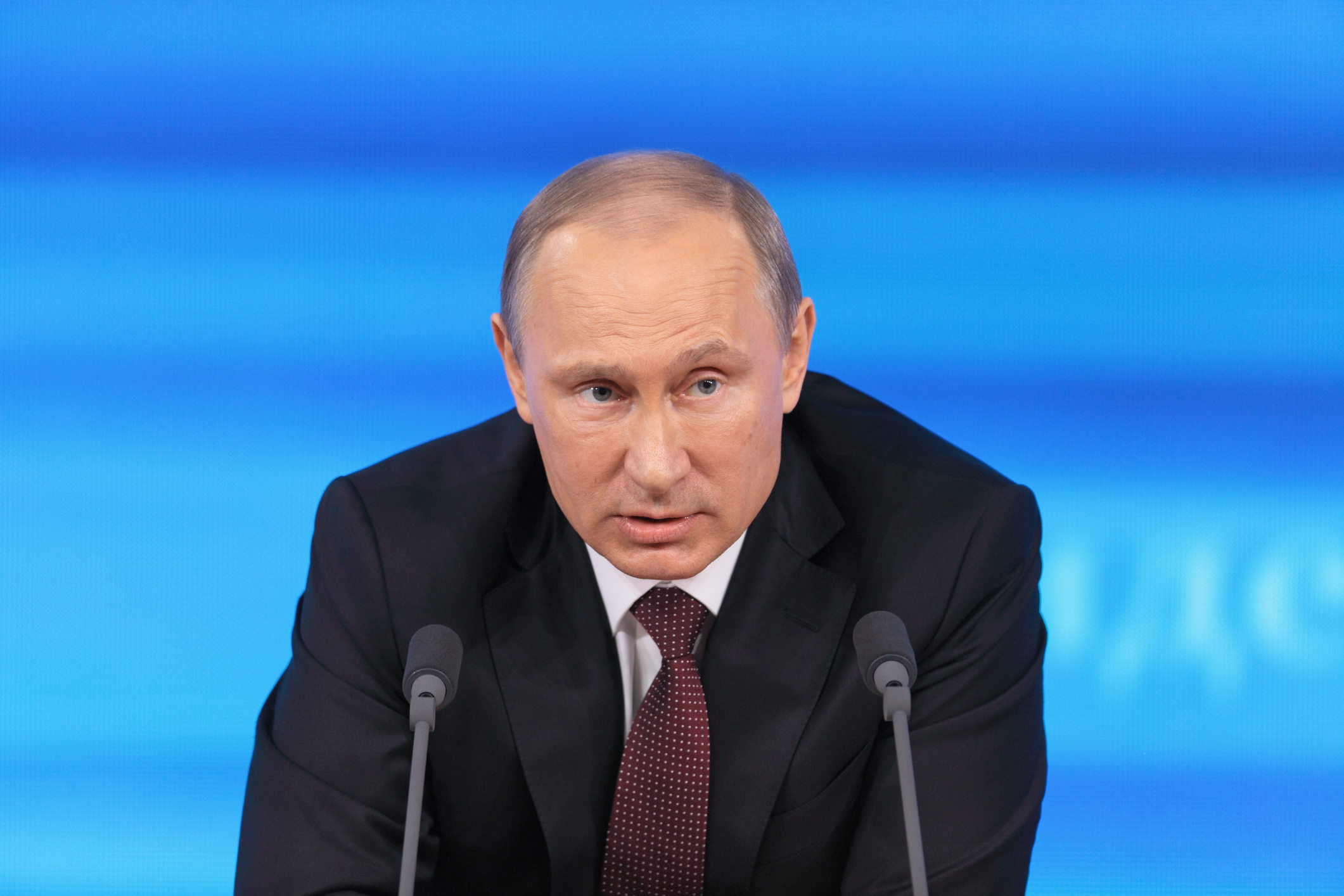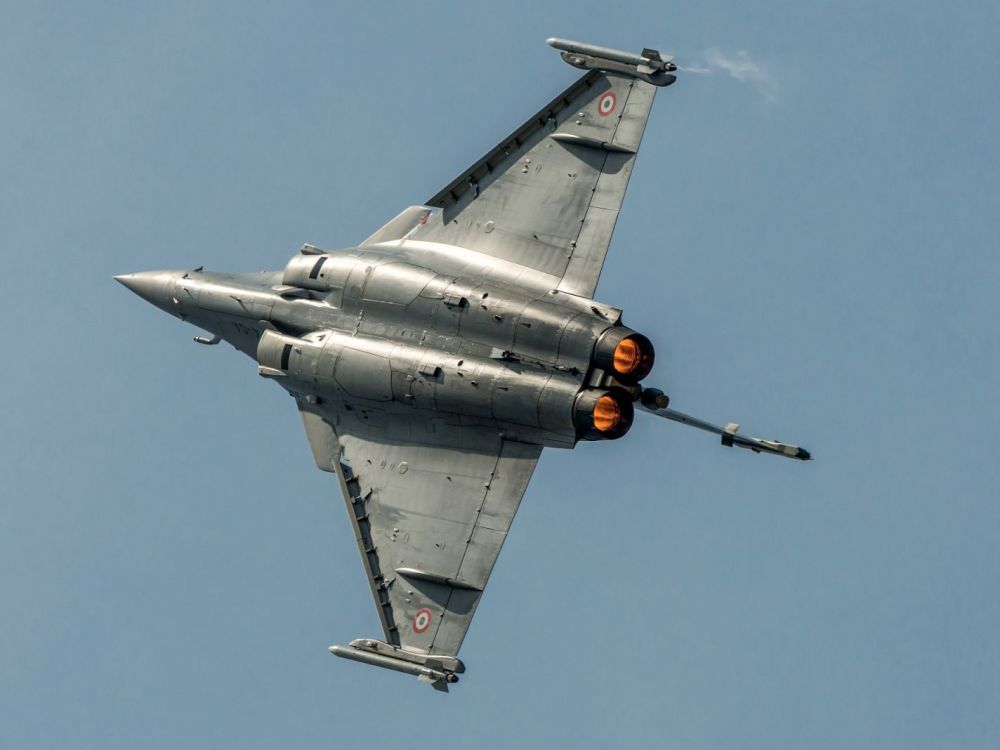By Robbin Laird
I had the chance recently to meet with LtGen Heckl, the Commanding General, Marine Corps Combat Development Command, and the Deputy Commandant for Combat Development and Integration, at his office in Quantico. He is retiring from the USMC this month, so this is my exit interview with him.
As such, I asked him to look back at his time with the command and the general challenge of force structure change to deal with the evolving global military set of challenges.
He emphasized three key developments which have shaped his time at the command.
First, he underscored that the U.S. military and its allies are facing a revolution in military affairs. When that phrase was coined, it referred to the significance of precision warfare leading to an ability to enhance force capability to defeat an adversary who did not have such capability.
As Peter Munson noted in a 2013 article:
When you read more deeply about the RMAs, for example in Williamson Murray and Macgregor Knox’s masterful edited volume, The Dynamics of Military Revolution: 1300 – 2050, you can see that the RMAs were much more than military revolutions. They were revolutions in socio-political affairs. Knox and Murray list:
The seventeenth century creation of the nation-state and the “large-scale organization of disciplined military power”
The French Revolution’s merging of “mass politics and warfare”
The Industrial Revolution and the subsequent ability to “arm, clothe, feed, pay, and move swiftly to battle” the masses unleashed by nationalism
The First World War, which combined the nationalistic fervor of the French Revolution with the refined legacy of the Industrial Revolution in a now-familiar pattern of modern warfare
And finally, the advent of nuclear weapons as the technological crown of total war
All but the last of these revolutions were more socio-political and economic than technical, though each created huge organizational, technical, and tactical changes. The military revolutions were only smaller included pieces of much larger changes. The military progression, however, cannot be extracted from the socio-political context or vice versa. As Charles Tilly famously said, “War makes the state and the state makes war.”
When LtGen Heckl spoke of his understanding of the current RMA, he underscored the coming of autonomous systems and machine learning as infusing change in the force and requiring the force to adapt and incorporate changes associated with these developments into on ongoing force design.
But to Munson’s point cited above, such a change is also associated with socio-political and economic changes, and for this variant of the RMA, it is unfolding in the context of the emergence of significant authoritarian powers and movements, and the need for liberal democratic allies to find more effective ways to work together rather than just relying on a single global power which was the United States and its military.
This RMA is associated with the opportunity and necessity for the United States and its allies to more effectively collaborate in dealing with proliferating threats and challenges from authoritarian states and movements.
That led to his second change. He underscored the importance of the U.S. military working with allies. As he put it: “You will never see me saying JADC2. I always say CJADC2 or coalition C2 and the need to work together from a common operating picture.”
This is of course hard, but LtGen Heckl noted that the new Neller Center at Quantico had been stood up in part to facilitate such change. LtGen Heckl emphasized that the wargaming and analysis center will be able to facilitate greater allied collaboration of the type he considers necessary as part of the new RMA, with data-driven outcomes to facilitate better decision-making
The Marine Corps now integrates allies and partners into exercises and experimentation more frequently, has expanded its coalition training opportunities, and is working to create relationships that support a more globally dispersed logistics framework.
Third, there is an emphasis on speeding up the incorporation of technology into the force.
Here the emphasis has been upon introducing protypes into the force and having the warriors determine their utility and, if demonstrated as such, finding ways to incorporate that technology.
As LtGen Heckl said, “I am not focused on multiple FYDP acquisitions; I am looking for ‘the future is now’ capabilities.”
This includes collaborating more closely with industry, navigating a complex acquisition process to field technologies sooner and changing training to ensure tactical proficiency at the lowest level.
In this regard, he focused on counter-UAV technologies, and he pointed out that four different capabilities are coming into the force next year. The basic approach is to enable ground combat Marines to deal with UAV threats and have the air arm of the Marine Air Ground Task Force deal with broader air defense issues.
He also underscored the central significance of C2 modernization, notably when distributing the force.
A key part of the strategic redesign of U.S. and allied forces is force distribution for survival, but C2 is critical to tie those forces together to get the kind of lethality the force needs to prevail.
LtGen Heckl highlighted that two prototype units have been developed and used by the Marines to provide for C2 at the tactical edge. These two TENX or tactical edge node expeditionary units have provided for movement of data for C2 successfully and could be adopted more generally in the force.
LtGen Heckl also mentioned that the Army and the Marine Corps are pursing rapid acquisition of attack and logistics drones and autonomous systems. They are programs built by different defense companies, but the two services are cooperating in understanding the common possibilities of use.
The Marine Corps has been transformed by its air capabilities, from the MV-22 Osprey to the F-35 Lightening II to the CH-53 King Stallion. The new RMA leverages these platforms and their capabilities in various ways. Much of the dynamic changes are associated with payloads and their rapid upgradeability associated with more attributable platforms co-joined with the payloads.
For example, TENEX can be carried by an Osprey, and the speed, range and ability to be at height allows it to be available for a variety of combat capabilities that can be clustered together by a common C2.
Additionally, the ability of the global F-35 fleet to share common data and provide an ISR “blue blanket” is a key part of being able to leverage new capabilities generated by the new RMA.
But it is about force structure change within strategic redesign of U.S. and allied military policies and the technological advances providing expanded capabilities that allow the Services to meet the challenges of the new landscape.
Author’s Note: I found this article published in 2023 as very suggestive of the kind of changes which LtGen Heckl was highlighting. And not surprisingly, this was done by his previous command, I MEF.
Pacific Marines Conduct Command and Control Exercise
13 Feb 2023
By Chuck Little
CAMP H.M. SMITH, Hawaii —
“The Future is Now.” That phrase is as true today in the United States Marine Corps as it is anywhere.
In late January through early February, Pacific Marines from California and Japan demonstrated their ability to work together and synchronize all-domain effects from Hawaii across the Indo-Pacific region for the Joint force and interagency partners.
During the exercise, Marines from I MEF’s Marine Air Control Group 38, and other critical enablers including the I MEF Information Group and Fires and Effects Coordination Center, deployed to Hawaii from southern California and Arizona. In Okinawa, Japan, III MEF forces brought together capabilities at the task-force level in the First Island Chain, and served as a higher-echelon node for the I MEF team now operating in Hawaii.
“We rapidly went from an idea to establishing a fully-functional command and control structure that can connect two MEF-level Task Forces as Pacific Marines, stretching from Okinawa to Oahu,” said Col. Jeremy S. Winters, the commanding officer of MACG-38, 3rd Marine Aircraft Wing
Once on the ground in Hawaii, this team established and operated an expeditionary command and control node from an austere location using both organic equipment as well as equipment provided by III MEF forces.
“We fell in on 3rd Marine Littoral Regiment equipment to show the interoperability of the MLR with the MEF-level command and control systems, which also connect into the Joint force,” said Winters.
The Hawaii C2 node, which can operate in contested terrain, was comprised of a Multi-Function Air Operations Center and a Multi-Domain Operations Center. These were plugged into an All-Domain Operations Center that was established in Okinawa by III MEF.
The MAOC’s mission is to generate an integrated tactical picture of the operating environment in order to control aircraft and missiles, enable decision superiority, gain and maintain custody of adversary targets, hold those adversary targets at risk, and enable the engagement of targets in all domains as directed in support of Marine Corps, Naval, Joint, Ally and Partner forces.
The MDOC executes deliberate and dynamic kill chains via the fusion of command and control, intelligence and fires. The ADOC in Okinawa had a similar mission, but coordinated command and control, intelligence and fires at a higher echelon – at the Task Force-level.
This multi-echelon, all-domain C2 system was linked into every service and functional component command and control system in U.S. Indo-Pacific Command. It was also linked into organic, Joint and interagency sensors, and intelligence and space/cyber elements. Together, these created a common intelligence picture and a common operating picture of the Indo-Pacific maritime environment, to include possible threats. These pictures inform decision-making and enable the Marines to synchronize organic, Joint, and/or interagency fires – both lethal and non-lethal – across air, sea, land, space and cyber to achieve specific, desired effects.
The ADOC/MDOC-led all-domain C2 system conducted six days of Joint and partner exercises inside the first island chain. A full mission debrief was given Feb. 7, 2023, to Adm. John Aquilino, commander, USINDOPACOM, Lt. Gen. William Jurney, commander, U.S. Marine Corps Forces, Pacific, and other senior leaders from each of the Hawaii-based component commands.
“As the multi-domain space grows, we wanted to demonstrate how the Marine Corps’ traditional approach to Marine Air-Ground Task Force operations – the ‘single battle concept’ – offers a good example for the rest of the Joint force. Once you get people out of their functional or service stovepipes and oriented on a single, integrated Joint battlespace, we can really start to create operational and tactical tempo as a Joint force. It’s about combined arms, in multiple domains,” said Winters.
The MAOC was linked into a MDOC, as well as organic, Joint, and interagency sensors, widely dispersed throughout the operating area. These included an AN/TPS-80 Ground/Air Task Oriented Radar S-band radar and a Composite Tracking Network, which integrates ground, surface, and airborne sensors. Together, these systems fed a common intelligence and operating picture of the maritime threat environment, stretching from the continental United States, through Hawaii, out to the first island chain.
Winters described his Marines’ function this way. “Our job is to take all these Joint kinetic and non-kinetic Joint force shooters, integrate them via a fused, tactical picture containing both intelligence and tactical track data, and enhance the lethality at the tactical edge. We leveraged the existing relationships and technologies that Marine Air Control Groups and MIGs have with our Joint and partner forces to really integrate all their disparate domain-centric pictures, into an integrated, single-battle picture,” Winters added.
This innovative approach to multi-domain operations is yet another fleet-led initiative to achieve the Marine Corps’ Force Design 2030 plan. FD2030 calls for new ways of thinking and operating, especially in the Indo-Pacific theater, relying on smaller, agile units capable of sensing and making sense of potential adversary movements and actions, putting – and holding – those potential adversaries at risk, and redeploying before being held at risk themselves. This is a challenging task, especially given the vast distances over which forces may have to operate in the Indo-Pacific, but Marines have never been known to back down from a challenge.
The Marines’ ability to establish this expeditionary, all-domain integration node in contested terrain bolsters the Joint force and coalition partners, integrated deterrence, and the National Defense Strategy.
“It’s really about all-domain, combined arms,” said Winters. “You don’t have to own the thing to integrate the thing. MACG-38 doesn’t normally work with space and cyber people, but my goal is to deconflict and integrate our operations from theirs and sequence them in space, time and effect to have an out-sized impact on our adversary. This MDOC is the first time we’ve had space and cyber there and made a fires and effects plan with them. That’s super powerful, and exactly what our combatant commander is looking for.”
Featured image: US Marine Corps LtGen. Karsten S. Heckl, Commanding General, Marine Corps Combat Development Command and Deputy Commandant, Combat Development and Integration, and a native of Stone Mountain, GA, speaks to US Marines from Marine Wing Communications Squadron 38, 9th Communications Battalion, Marine Corps Tactical Systems Support Activity, and the Marine Corps Warfighting Laboratory during Project Convergence Capstone 4, March 04, 2024 at Camp Pendleton, CA.
PC-C4 is an Army-hosted, all-Service and multinational experiment. During PC-C4, the Marine Corps Warfighting Laboratory tested new technologies and capabilities and emerging concepts, including the multi-domain corridor. The Marine Corps’ participation in PC-C4 supported Force Design initiatives, integrated Joint force and Coalition capabilities into experimentation, and demonstrated the Marine Corps’ commitment to the Joint Warfighting Concept .
CAMP PENDLETON
03.04.2024
Photo by Kevin Ray Salvador
Marine Corps Warfighting Laboratory | Futures Directorate



